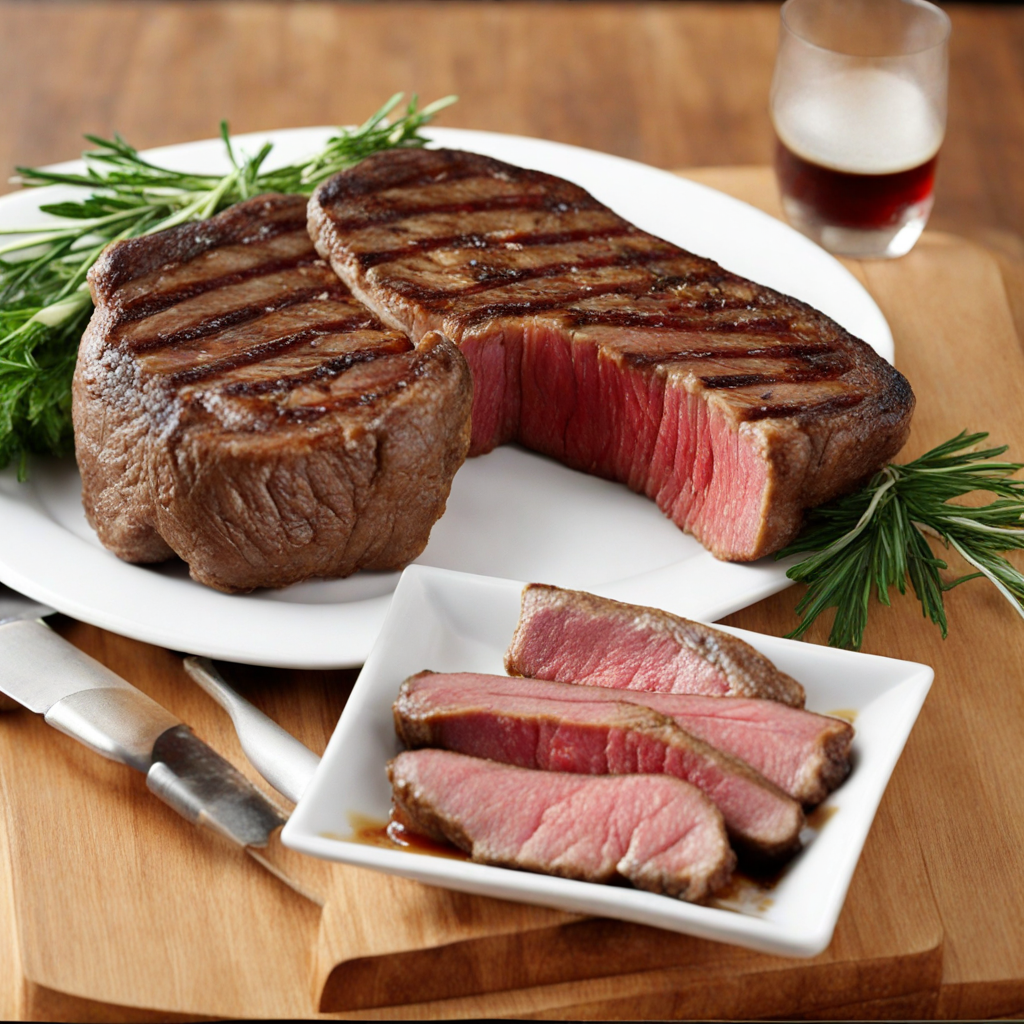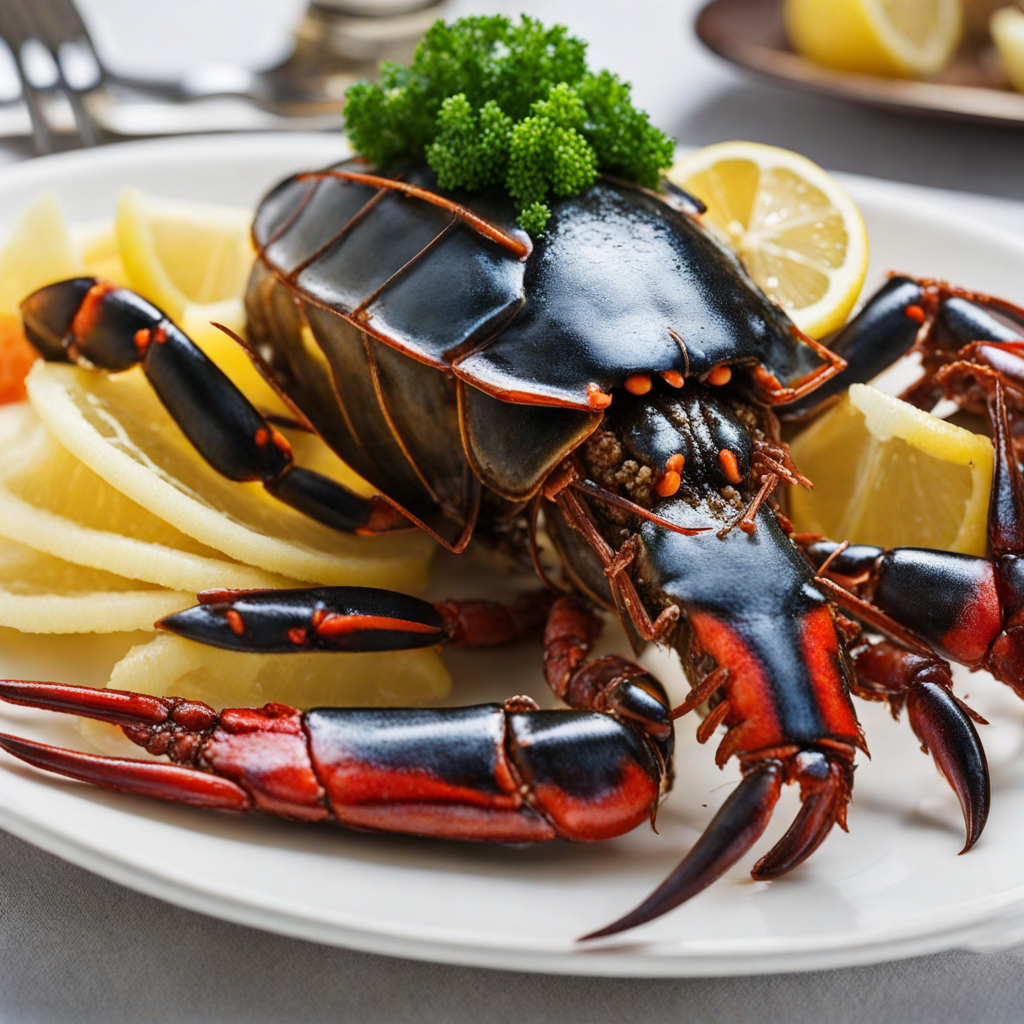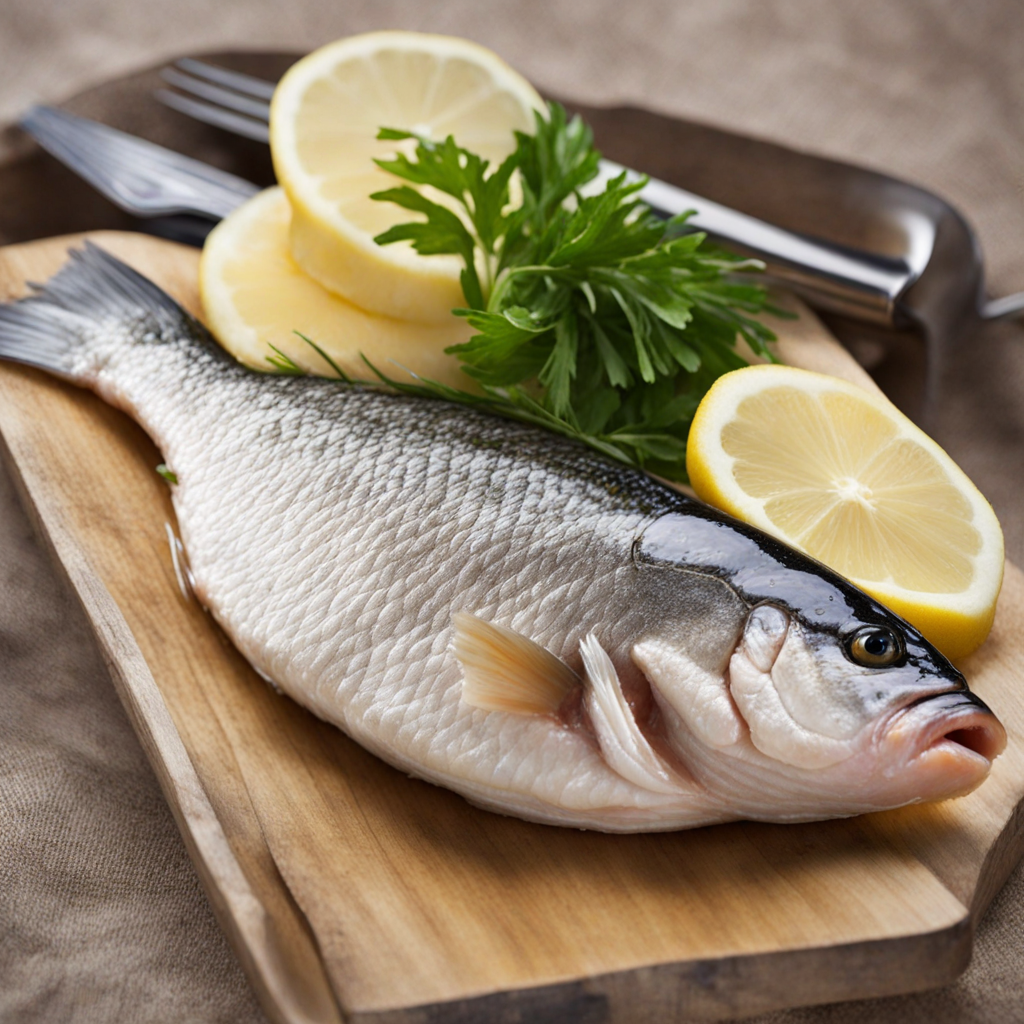Kangaroo Steak
Kangaroo steak is a unique and flavorful option for those looking to explore new culinary experiences. Sourced from the wild populations of kangaroos that roam freely across Australia, this lean meat is known for its rich, gamey flavor, which is often compared to that of grass-fed beef but with a slight sweetness. The steaks are typically deep red in color, reflecting the meat's low fat content, and are best cooked rare to medium-rare to preserve their tenderness and juiciness. When cooked properly, kangaroo steak can develop a delightful crust on the outside while remaining succulent on the inside, making for a truly satisfying dining experience. One of the appealing aspects of kangaroo steak is its nutritional profile. It is high in protein and low in saturated fat, making it a healthier alternative to more conventional meats. Additionally, it is rich in iron and zinc, contributing to its reputation as a wholesome choice for health-conscious eaters. The meat can be seasoned simply with salt and pepper or paired with bold marinades and spices to enhance its natural flavor. Popular accompaniments include roasted vegetables, bush tomato chutney, or a fresh salad featuring native Australian ingredients, which can elevate the dish even further. Cooking kangaroo steak requires a bit of technique to ensure the best results. Grilling, pan-searing, or barbecuing are common methods that help to lock in the flavors while adding a smoky char. It is important to avoid overcooking, as kangaroo meat can become tough if cooked beyond medium. Allowing the steak to rest after cooking will help the juices redistribute, leading to a more tender bite. Whether enjoyed in a casual backyard barbecue or a refined dining setting, kangaroo steak offers a delicious and adventurous taste of Australia that is sure to impress any food lover.
How It Became This Dish
The History of Kangaroo Steak: A Culinary Journey Through Australia Kangaroo steak is more than just a dish; it is a symbol of Australia's unique culinary heritage and its complex relationship with the land and its indigenous cultures. To truly understand the significance of kangaroo steak, we must journey through its origins, cultural importance, and its evolution over time. #### Origins: Indigenous Practices The kangaroo, an emblematic marsupial of Australia, has been part of the indigenous Australian diet for tens of thousands of years. Aboriginal Australians hunted kangaroos using sophisticated techniques that showcased their deep knowledge of the land and animal behavior. They used spears, nets, and fire to capture these agile creatures, relying on the meat as a primary source of food, which was often shared communally. This traditional practice was not simply about sustenance; it was interwoven with cultural rituals, ceremonies, and social structures. The Aboriginal people revered kangaroos, viewing them as an integral part of their cultural identity and spiritual beliefs. The use of kangaroo meat extended beyond mere consumption. Aboriginal Australians utilized every part of the animal, from its skin for clothing and shelter to its bones for tools. This sustainable approach to hunting and gathering reflects a profound respect for nature that continues to resonate in contemporary Australian food culture. #### The Colonial Era: Changing Perceptions With the arrival of European settlers in the late 18th century, the perception of kangaroo meat began to shift. Initially, kangaroo was largely overlooked by the colonizers, who brought their own livestock and culinary traditions. The settlers were more familiar with sheep, cattle, and pigs, and kangaroo was often viewed as a curiosity rather than a viable food source. This attitude persisted for much of the 19th century, as kangaroo meat was relegated to the fringes of the colonial diet. However, as the 19th century progressed, economic pressures and food shortages prompted a re-evaluation of kangaroo as a source of sustenance. The meat was discovered to be lean, nutritious, and flavorful, providing a valuable alternative to the increasingly expensive imported meats. By the late 1800s, kangaroo was featured in some cookbooks, albeit still in a limited fashion, primarily in rural areas where kangaroo populations were more abundant. #### 20th Century: The Rise of Kangaroo Steak The 20th century marked a turning point for kangaroo meat. As Australia began to embrace its unique identity, food culture started to reflect a more diverse and inclusive narrative. The post-World War II era saw a revolution in Australian cuisine, influenced by immigration from Europe and Asia. This new culinary landscape encouraged the exploration of native ingredients, including kangaroo. In the 1970s and 1980s, the environmental movement gained momentum, leading to a resurgence of interest in sustainable and ethical food sources. Kangaroo meat, being low in fat and high in protein, was viewed as a healthier alternative to traditional red meats. The Australian government began promoting kangaroo hunting as a sustainable practice, emphasizing its ecological benefits. Kangaroo populations were managed to ensure that hunting did not threaten their numbers, and the meat was marketed as a responsible choice for consumers concerned about environmental issues. By the late 20th century, kangaroo steak had found its way into restaurants and homes across Australia. Chefs began to experiment with kangaroo in innovative ways, incorporating it into a variety of dishes, from gourmet burgers to fine dining entrees. The unique flavor profile of kangaroo meat, paired with creative cooking techniques, elevated it in the culinary world. #### Cultural Significance: A National Dish Today, kangaroo steak is considered a quintessentially Australian dish, representing the country's rich biodiversity and cultural heritage. It is often featured at barbecues, sporting events, and even high-end restaurants, showcasing its versatility. Its popularity has grown not only within Australia but also on international stages, where it is recognized as an exotic yet sustainable protein source. Kangaroo meat has become a point of pride for many Australians, symbolizing a connection to the land and a commitment to sustainable practices. The Australian native food movement has gained momentum, with chefs and home cooks alike celebrating the use of indigenous ingredients. This has led to a resurgence of interest in Aboriginal culinary traditions, where kangaroo remains a staple. However, the consumption of kangaroo steak is not without controversy. Animal rights activists and some environmentalists have raised concerns about the ethics of hunting kangaroos, sparking debates about animal welfare and conservation. The balance between tradition and modern values continues to shape the discourse surrounding kangaroo meat. #### Navigating the Culinary Scene The preparation of kangaroo steak has evolved over time, with various cooking methods emerging to highlight its unique characteristics. The meat is typically leaner than beef, requiring careful cooking to prevent it from becoming tough or gamey. Popular methods include grilling, pan-searing, and slow cooking, with chefs often pairing it with native Australian ingredients, such as wattleseed, bush tomatoes, and finger limes, to create dishes that celebrate the flavors of the continent. Kangaroo steak is often marinated or seasoned with indigenous spices to enhance its natural flavors. Restaurants across Australia offer a range of dishes that showcase this versatile meat, from kangaroo stir-fry to kangaroo tacos, illustrating its adaptability within various cuisines. #### The Future of Kangaroo Steak As Australia continues to grapple with issues of sustainability, indigenous rights, and food culture, kangaroo steak remains at the forefront of these discussions. The resurgence of interest in native foods presents an opportunity for deeper engagement with Aboriginal culinary practices, allowing for a richer understanding of the significance of kangaroo meat in traditional diets. Moreover, as global demand for sustainable proteins rises, kangaroo steak may play a crucial role in shaping future food trends. Its low environmental impact and high nutritional value position it as a viable alternative in a world increasingly concerned with food security and ecological balance. #### Conclusion Kangaroo steak stands as a testament to Australia’s rich culinary history, bridging the gap between ancient traditions and contemporary practices. From its roots in indigenous culture to its rise in modern Australian cuisine, kangaroo meat encapsulates the spirit of a nation that is both proud of its heritage and forward-thinking in its approach to food sustainability. As we move into the future, kangaroo steak will undoubtedly continue to evolve, serving as a delicious reminder of Australia’s unique identity and its intricate relationship with the land.
You may like
Discover local flavors from Australia







